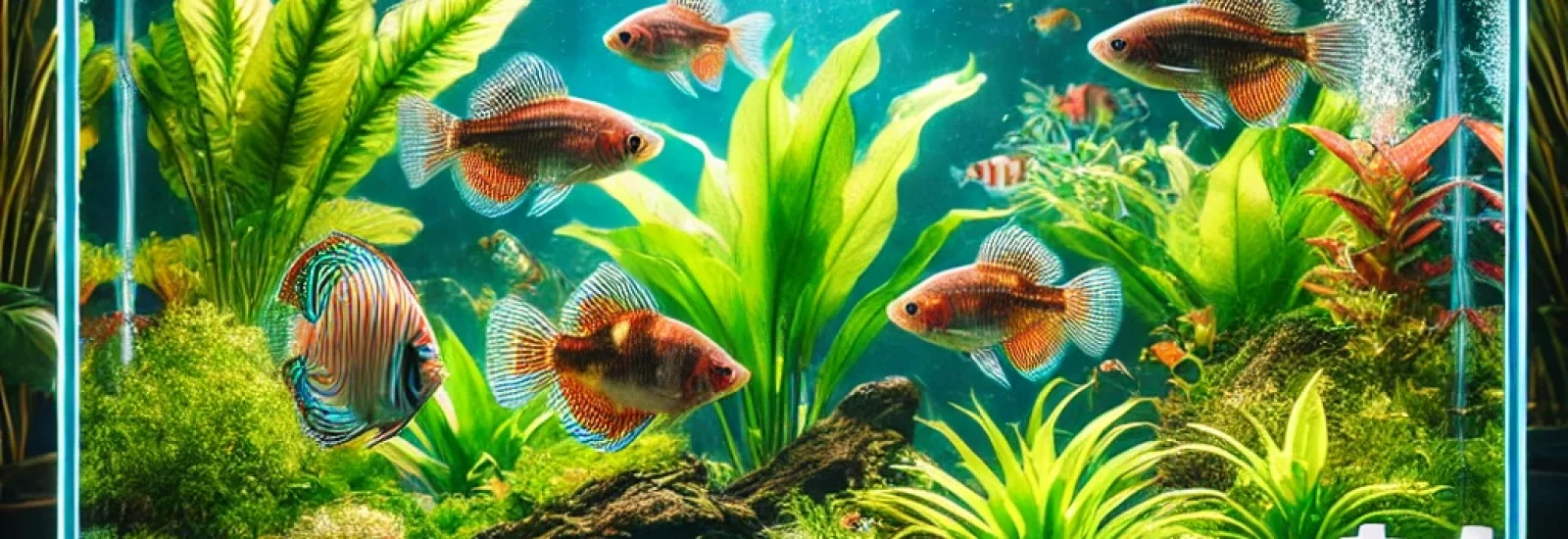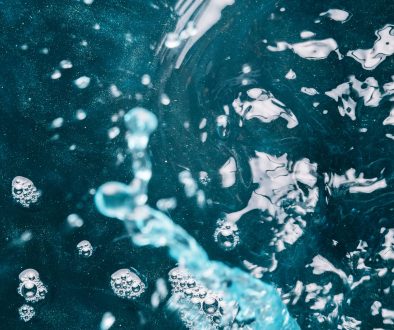Mastering Aquarium Water Parameters for a Thriving aquarium
Maintaining a thriving aquarium requires more than just feeding the fish and cleaning the tank. One of the most critical aspects of aquarium care is monitoring and managing water parameters. Proper water quality ensures the health and longevity of your aquatic pets and plants. In this blog, we will delve into the essential water parameters you need to monitor, their ideal ranges, and practical tips for managing them effectively.
Key Water Parameters
- pH Level
- Ammonia (NH3)
- Nitrite (NO2-)
- Nitrate (NO3-)
- Temperature
- Hardness (GH and KH)
- Dissolved Oxygen (DO)
- Phosphate (PO4^3-)
- pH Level
What it is: pH measures the acidity or alkalinity of the water on a scale from 0 to 14, with 7 being neutral.
Ideal Range: Most freshwater aquariums thrive with a pH between 6.5 and 7.5, but specific requirements depend on the species kept.
Why it Matters: pH affects fish health and the effectiveness of biological filtration.
Management Tips:
- Test Regularly: Use pH test kits or electronic meters.
- Buffering: Add commercial pH buffers or natural buffers like crushed coral to stabilize pH.
- Avoid Sudden Changes: Gradual adjustments prevent stress to fish.
- Ammonia (NH3)
What it is: Ammonia is produced from fish waste, uneaten food, and decomposing organic matter.
Ideal Range: 0 ppm. Ammonia is highly toxic to fish.
Why it Matters: High ammonia levels cause gill damage and can be fatal to fish.
Management Tips:
- Regular Testing: Especially important in new tanks or after adding new fish.
- Biological Filtration: Ensure your filter media supports beneficial bacteria to convert ammonia to nitrite.
- Water Changes: Regular water changes dilute ammonia levels.
- Nitrite (NO2-)
What it is: Nitrite is a by-product of ammonia oxidation by beneficial bacteria.
Ideal Range: 0 ppm. Even low levels of nitrite can be harmful.
Why it Matters: Nitrite inhibits oxygen transport in fish blood, leading to suffocation.
Management Tips:
- Established Biofilter: Maintain a healthy colony of nitrifying bacteria.
- Salt Addition: A small amount of aquarium salt can reduce nitrite toxicity.
- Monitor Frequently: Especially during the initial cycling phase.
- Nitrate (NO3-)
What it is: Nitrate is the end product of the nitrogen cycle, less toxic but still needs management.
Ideal Range: Below 20 ppm for most freshwater tanks, below 40 ppm for more tolerant species.
Why it Matters: High nitrate levels can lead to algae blooms and stress fish.
Management Tips:
- Water Changes: Regular changes keep nitrate levels low.
- Live Plants: Plants absorb nitrates, improving water quality.
- Avoid Overfeeding: Excess food contributes to higher nitrate levels.
- Temperature
What it is: The measure of how hot or cold the water is.
Ideal Range: Varies by species; generally, 22-28°C (72-82°F) for tropical fish.
Why it Matters: Extreme temperatures can stress or kill aquatic life.
Management Tips:
- Heaters: Use adjustable heaters to maintain a stable temperature.
- Thermometers: Regularly check water temperature with reliable thermometers.
- Avoid Fluctuations: Keep the tank away from drafts and direct sunlight.
- Hardness (GH and KH)
What it is: General Hardness (GH) measures calcium and magnesium ions, while Carbonate Hardness (KH) measures carbonate and bicarbonate ions.
Ideal Range: GH: 4-12 dGH, KH: 3-10 dKH, but specific ranges depend on the species.
Why it Matters: Hardness affects pH stability and fish health.
Management Tips:
- Test Kits: Regularly check GH and KH levels.
- Adjustments: Use commercial hardness increasers or softeners as needed.
- Dissolved Oxygen (DO)
What it is: The amount of oxygen dissolved in the water, essential for fish and beneficial bacteria.
Ideal Range: Above 5 ppm.
Why it Matters: Low oxygen levels can lead to fish stress and poor water quality.
Management Tips:
- Aeration: Use air stones, air pumps, or surface agitation to increase oxygen levels.
- Live Plants: Plants produce oxygen during photosynthesis.
- Avoid Overcrowding: Too many fish can deplete oxygen quickly.
- Phosphate (PO4^3-)
What it is: Phosphates come from fish waste, uneaten food, and decaying plants.
Ideal Range: Below 0.5 ppm.
Why it Matters: High phosphate levels promote algae growth and can affect water quality.
Management Tips:
- Regular Water Changes: Dilute phosphates with clean water.
- Feed Sparingly: Overfeeding contributes to higher phosphate levels.
- Phosphate Removers: Use chemical media designed to bind and remove phosphates.
Conclusion
Maintaining optimal water parameters is the foundation of a healthy and thriving aquarium. Regular testing and proactive management of pH, ammonia, nitrites, nitrates, temperature, hardness, dissolved oxygen, and phosphates will ensure a balanced and stable environment. By understanding and controlling these parameters, you can provide the best possible habitat for your aquatic pets and enjoy a beautiful, vibrant aquarium. Happy fish keeping!





